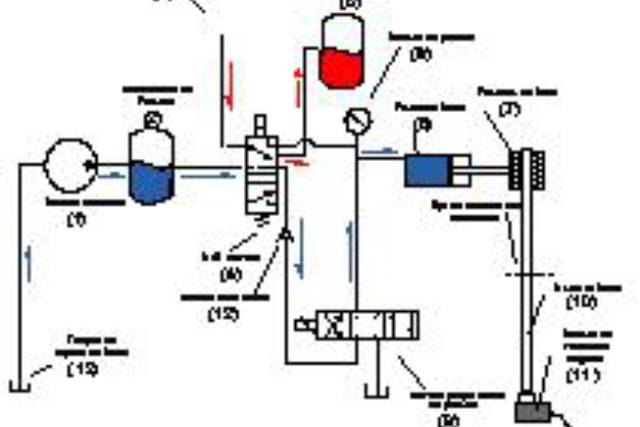NEW ABS BRAKING SYSTEM
Description
The braking system is one of the most important active safety elements in motor vehicles, it is responsible for reducing speed to a stop if necessary. Developing braking systems that maintain vehicle stability and control, while also achieving the shortest possible stopping distance, has been a challenge since traction vehicles began to increase the speed and power of their engines.
At present, most manufacturers offer numerous devices related to brake equipment among the equipment options of their vehicles. Among the most widely implemented systems in vehicles is the anti-lock braking systems (ABS.- Antilock Brake System).
Thus, the braking system object of the present invention comprises a simplified hydraulic circuit with respect to the traditional configuration of a conventional ABS system, and a control system of said hydraulic circuit. The hydraulic circuit has been simplified over the traditional ABS setup. This configuration allows the process to be carried out in a controlled manner and up to optimal levels, both in the moments of pressure reduction and in those of increase, not being necessary, for example, a total decrease in pressure in the case of blockage.
The control system included in this invention acts as an interface between the driver and the hydraulic braking circuit, with which the driver has the feeling of being the one who acts the braking system, although in reality the control of braking is established by logic control depending on the force set by the driver on the brake pedal and the grip conditions of the road. In conclusion, one can speak of an automatic and intelligent braking system.
Advantages
- Decrease in braking distance under any grip condition.
- Improved directional stability during braking processes.
- Elimination of pressure fluctuations and rebounding in the brake pedal typical of traditional ABS.
- Elimination of wheel lock.
- Possibility of performing a By-Wire braking.
- Easy incorporation of other monitoring systems such as ESP or TCS.
- Possibility of implantation in both four-wheeled and three or two-wheeled vehicles.
- Does not require the installation of additional sensors.
Uses and Applications
This technology has its application in the automotive sector, and in particular for its implementation in the technological area of vehicle braking control systems. This brake system can be considered an intelligent system thanks to the developed control method.
Keywords
Sectors
Areas
Patent Number
ES2343667
Applicants
UNIVERSIDAD DE MÁLAGA
Inventors
JUAN ANTONIO CABRERA CARRILLO, ANTONIO SIMON MATA, JUAN JESUS CASTILLO AGUILAR, ANTONIO ORTIZ FERNANDEZ, FRANCISCO MANUEL GARCIA VACAS, ANTONIO JESUS GUERRA FERNANDEZ
Filing Date
31/12/2008
Protection Level: National (Spain) and international
Processing Status: Spanish patent and international protection application








